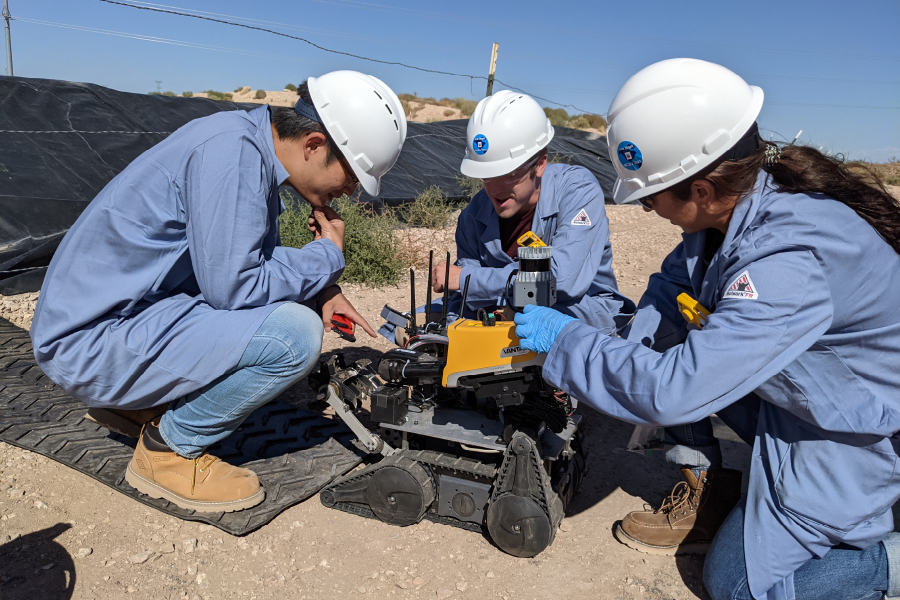
Analyzing Waste Pit Contaminants
When fossil fuels are extracted from the earth, byproducts of their processing are left behind in vast waste “pits.” To identify possible contamination and plan for remediation, people took samples from these pits—collecting them by hand while navigating difficult terrain and hazardous conditions. In the best scenario, a person could safely and efficiently collect three to five samples from a large site in one day. The analysis and results could take much longer to receive.
 Professor Greg Lowry is using robots to increase both safety and speed in the remediation process. He is working to develop terrestrial robots that can potentially autonomously explore natural environments, select sample locations, extract samples, and analyze the data online without exposing humans to hazardous conditions.
Professor Greg Lowry is using robots to increase both safety and speed in the remediation process. He is working to develop terrestrial robots that can potentially autonomously explore natural environments, select sample locations, extract samples, and analyze the data online without exposing humans to hazardous conditions.
“The scope of our job is to build robots that drive around autonomously and take measures of contaminants from the oil and gas industries,” he says.
The robots—which can use X-ray fluorescence detectors to identify contaminants, such as salt concentration, drive themselves into areas that are difficult for humans to access. They are also designed for difficult terrain—much like the Mars rovers.
This accessibility allows the robots to gather hundreds of samples from each pit, providing data points that create a much clearer picture of onsite contaminants and hotspots. “The robots collect a lot more data than people can, are more representative of the whole pit, and keep humans out of potentially risky situations,” says Lowry. “They also provide reliable data that leads to better management decisions.”
Lowry’s research is based on collaboration between teams working in sensing, sampling, mobility, and autonomy. His team works to build contaminant detectors that take and analyze samples. Another team of engineers create the technology that allows the robot to drive through tough terrain. “This group works on what the mobility platform looks like – everything from wheels to ground clearance,” he adds.
"...the cost of sending people out to take samples is expensive and time-consuming. This project creates a system that makes it much easier to identify contaminant distribution."
The goal is for the robot to chart its own path, based on the information it’s received about the site. Lowry mentions that AI algorithms allow the robot to decide where to go next, given all of the samples it has already taken. “This minimizes uncertainty and allows the robot to collect a large number of samples in the least amount of time.”
He adds that robotic sampling has potential positive impacts outside of the oil and gas industries.
For example, if robots were able to sample vast areas of land after Hurricane Katrina, contaminated areas could have been identified and remediated much more quickly, allowing people back into towns and homes that remained closed for years afterward.
A prototype robot has already been tested in collaboration with industry sponsor Chevron and the PA Infrastructure Technology Alliance. Lowry adds that the team is continuing to test enhancements, such as LIDAR, to improve the robot’s function. While a roll-out of the robot is still up to five years away, it signals an important step in successfully remediating contaminants, leading to positive environmental impacts.
“If you own a contaminated site, you have to know what is there. But, the cost of sending people out to take samples is expensive and time-consuming. This project creates a system that makes it much easier to identify contaminant distribution.”